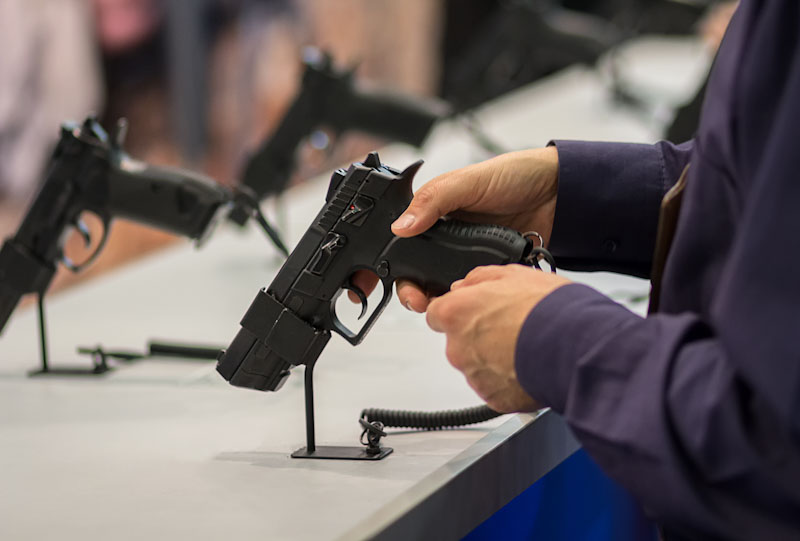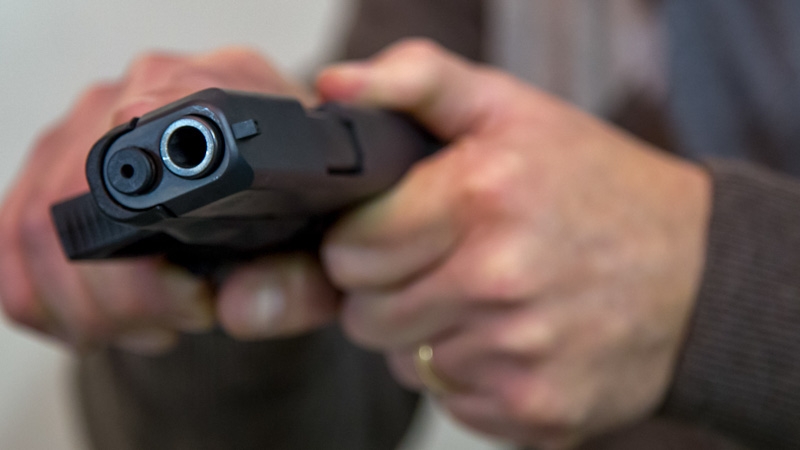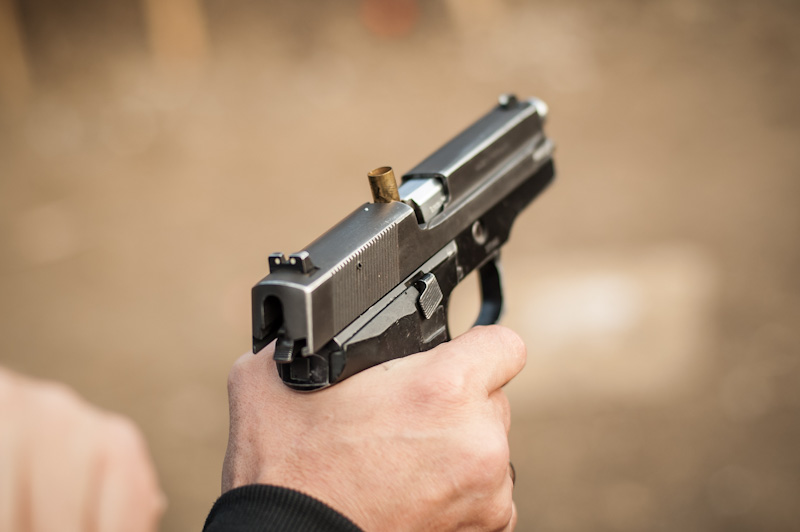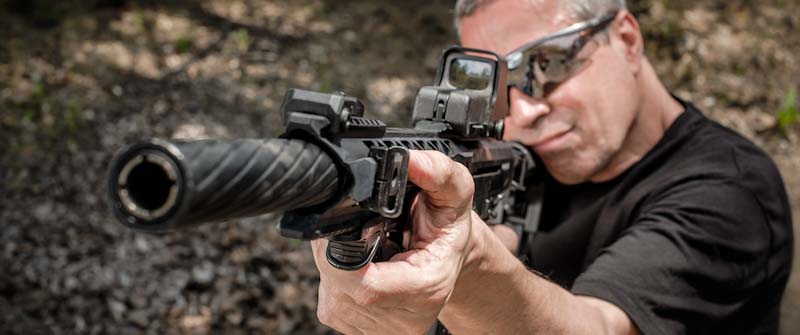Exploring the realm of handguns is often driven by diverse motivations such as self-defense, security, or even the sheer enjoyment of the experience. The decision to acquire a handgun can be influenced by these various factors.
Individuals may acquire the skill of using a firearm at different stages of life – some during childhood, others as teenagers, and a substantial number in adulthood. However, irrespective of age, challenges can arise in mastering the proper use of a handgun.
Upon embarking on regular shooting lessons, one quickly discovers that achieving accuracy with a firearm is far more challenging than the cinematic portrayals suggest. It’s not merely about pulling the trigger; rather, it necessitates a solid grasp of fundamentals, the cultivation of the right attitude, and rigorous practice to enhance one’s skills.
I was one of the folks who did his homework before purchasing my first firearm, and I’ve read as much as I could on the topic of gun ownership, training, and becoming proficient with various firearms. From my personal experience, I can tell you that all the problems listed in this article will occur at some point during your training routine.
Even with a diligent approach, seeking additional guidance is often essential, given the myriad factors and variables involved. Exploring the realm of handgun proficiency unveils prevalent challenges that novice shooters often contend with as they progress.
Addressing these challenges requires tailored results. Here, we explore some of the prevalent problems faced by those new to handgun shooting and provide effective solutions for each:
Optimal caliber choice for proper gun training
The temptation to use powerful firearms might be high, but it can impede your learning progress. This is a prevalent issue that arises when novices opt for high-powered calibers that exceed their skill levels. This choice can hinder the learning process, jeopardizing both safety and progress. The key to solving this problem lies in informed decision-making and a gradual approach to firearm proficiency.
Novices often underestimate the impact of powerful calibers on their ability to control and accurately handle a handgun. The excessive recoil and muzzle blast associated with high-powered rounds can lead to flinching, reduced accuracy, and even safety concerns. To address this challenge, it is crucial to adopt a measured and progressive approach to caliber selection.
Solution: Instead of starting with a high-powered caliber, novices should begin their training with lower-recoil options. This allows for the development of fundamental shooting skills without the intimidation of excessive recoil. As proficiency grows, individuals can gradually transition to more powerful calibers.
Initiate training with firearms chambered in lower-recoil calibers such as .22 LR or 9mm. These calibers provide a gentler introduction, allowing novices to focus on technique and accuracy.
You should also focus on the fundamentals and emphasize the importance of mastering proper grip, stance, and trigger control before advancing to more powerful calibers. This foundation is crucial for building confidence and control.
Seek professional guidance from certified firearms instructors who can instruct novices in choosing an appropriate caliber based on their skill level. Instructors can also provide personalized coaching to ensure safe and effective training.
Once a solid foundation is established, individuals can progressively move to higher-caliber handguns. This phased approach minimizes the risk of developing bad habits or experiencing discouragement.
Precision struggles
Encountering inaccurate hits is a prevalent challenge for novice shooters, persisting even after dedicated practice sessions. Achieving precision in shooting proves challenging, requiring a nuanced approach that extends beyond sheer repetition. The struggle often lies in balancing focus between the target and the rear sight, demanding a substantial learning curve to master.
Solution: To address this issue, it’s essential for novices to break down the process into manageable steps, gradually working towards proficiency. A key strategy involves intensively concentrating on the front sight alone, fostering a clearer and more attainable aim. This deliberate focus on the front sight aids in overcoming the difficulties associated with aligning the sights and obtaining an accurate sight picture.
A multifaceted solution emerges, combining both dry-fire and live-fire practices to reinforce the acquired skills. To refine accuracy further, consider adopting a sequential approach. Begin by quickly assessing the target, then proceed to perform sight alignment with a subsequent emphasis on the front sight alone. The latter step is indispensable for ensuring the success of your shot.
Maintaining minimal movement becomes paramount during these exercises. Resist the temptation to jerk the trigger or the handgun, as steadiness is integral to achieving accurate hits. This meticulous attention to detail, coupled with a systematic training regimen, empowers novices to gradually enhance their shooting proficiency and overcome the common hurdle of inaccurate hits.
Overcoming low hits
Experiencing consistently low hits on the target is a common occurrence for novice shooters, often stemming from misconceptions and inadvertent actions during the shooting process. This issue can be attributed to the anticipation of recoil, trigger jerking, and a tense grip, particularly if the fingers are improperly placed on the back strap.
Solution: Fixing this issue requires a proactive approach to refine shooting techniques and ensure better accuracy. The solution lies in a combination of mindful focus on the front sight and deliberate control over trigger and finger movements. Maintaining a proper grip is crucial; it should be smooth, consistent, and centered, avoiding any sideways deviation.
Concentrate on the front sight and minimize unnecessary movements when handling the trigger. Avoid the impulse to squeeze or pull, and instead, press the trigger smoothly without pushing the gun forward or downward. By adhering to these principles, success is virtually guaranteed, and improvement becomes evident with each subsequent training session. In essence, tackling the issue of consistently hitting low on the target involves cultivating a disciplined and deliberate approach to shooting.
Poor trigger control
Encountering difficulties while pushing the trigger is a common hurdle for shooters, often leading to issues such as insufficient pressure, off-center presses, or inadvertent movements. Achieving precision in shooting hinges on mastering this fundamental aspect, and with the right guidance, success is within reach.
Solution: To address the challenge of pushing the trigger, focus on establishing control and consistency. Optimal trigger contact is achieved by placing the finger between the midpoint of the first pad and the first crease. This nuanced adjustment proves crucial in enhancing your shooting proficiency and facilitating a more reliable trigger press.
An essential tip involves steering clear of using the tip of the trigger finger, opting instead for a smooth and uninterrupted press straight back. This deliberate approach minimizes the likelihood of erratic movements and contributes to improved accuracy. Importantly, resist the impulse to anticipate recoil, allowing for a steady and controlled trigger press.
By incorporating these tips into your handgun handling technique, you’ll observe rapid improvements. Mastering trigger control not only elevates your shooting precision but also instills confidence in your ability to navigate this fundamental aspect of marksmanship.
Struggling against the recoil
Confronting recoil is a common concern for novice handgun shooters, often leading to misconceptions about how to effectively manage this aspect. The instinct to forcefully push the gun down in an attempt to control recoil can inadvertently result in lower-than-desired shot placements.
Solution: Addressing this challenge necessitates a shift in perspective and a willingness to understand the natural dynamics of recoil. Rather than resisting it, novices should prepare to embrace recoil as an inherent part of the shooting process. It is important to acknowledge that recoil occurs after the shot, not before, alleviating the need to preemptively combat it.
To enhance shooting skills, it is crucial to let recoil unfold naturally and ride its course. Instead of pushing the gun down, allow it to rise and recover along the sight line. This approach not only facilitates better shot placement but also accelerates the improvement of shooting proficiency.
By adopting this mindset and technique, novice shooters can transform recoil from a perceived obstacle into an ally in their journey toward mastering handgun shooting. Embracing recoil as a natural occurrence contributes to a smoother and more effective shooting experience, promoting rapid skill development.
Concluding
Embarking on the journey of handgun shooting as a novice can present a myriad of challenges, as highlighted in this article. However, it’s crucial to recognize that with the right solutions at your disposal, no obstacle is unbearable. By adhering to the straightforward guidelines outlined in this article, you can swiftly navigate and overcome these challenges, witnessing immediate and efficient results.
While some may deem shooting an art, it’s essential to understand that these skills are acquirable, and the learning curve can be expedited with the guidance of a reliable mentor. The key lies in having the right instructor to guide you through each stage of shooting training.
As you advance through successive sessions, the development of your skills becomes apparent, emphasizing the notion that, under the right guidance, the refinement of handgun shooting is a process that can be expedited with effectiveness.
The crucial element for success lies in consistently moving forward and ensuring that any momentary setbacks do not hinder your mindset and determination to evolve into a skilled shooter.









